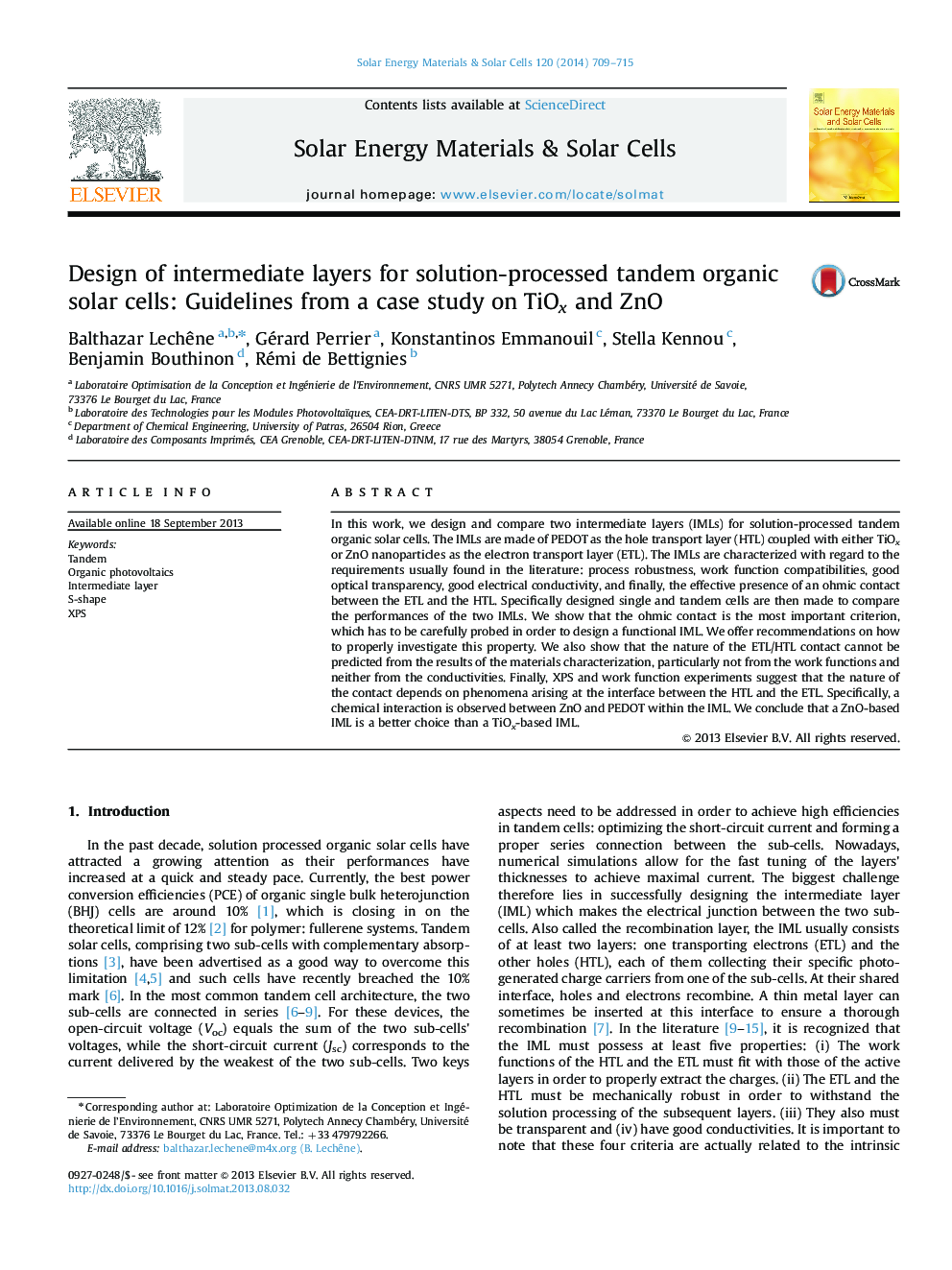| Article ID | Journal | Published Year | Pages | File Type |
|---|---|---|---|---|
| 78188 | Solar Energy Materials and Solar Cells | 2014 | 7 Pages |
•ZnO and TiOx are tested and compared as part of the intermediate layer of a tandem organic solar cell.•The ZnO-IML works properly, while the TiOx-IML produces an S-shape.•XPS studies suggest that an electronic chemical interaction is needed between the ETL and the HTL for an IML to function properly.•A method of probing the electrical contact within the IMLs is suggested.
In this work, we design and compare two intermediate layers (IMLs) for solution-processed tandem organic solar cells. The IMLs are made of PEDOT as the hole transport layer (HTL) coupled with either TiOx or ZnO nanoparticles as the electron transport layer (ETL). The IMLs are characterized with regard to the requirements usually found in the literature: process robustness, work function compatibilities, good optical transparency, good electrical conductivity, and finally, the effective presence of an ohmic contact between the ETL and the HTL. Specifically designed single and tandem cells are then made to compare the performances of the two IMLs. We show that the ohmic contact is the most important criterion, which has to be carefully probed in order to design a functional IML. We offer recommendations on how to properly investigate this property. We also show that the nature of the ETL/HTL contact cannot be predicted from the results of the materials characterization, particularly not from the work functions and neither from the conductivities. Finally, XPS and work function experiments suggest that the nature of the contact depends on phenomena arising at the interface between the HTL and the ETL. Specifically, a chemical interaction is observed between ZnO and PEDOT within the IML. We conclude that a ZnO-based IML is a better choice than a TiOx-based IML.
